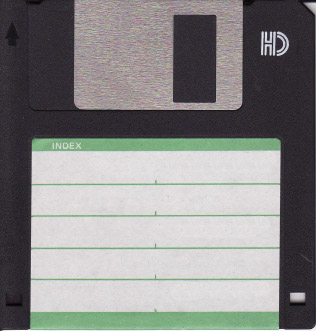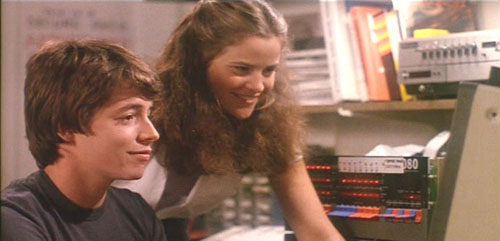From cnet:
Sony delivers floppy disk’s last rites
CNET News / April 25, 2010
Sony, which holds 70% of the 3.5-inch floppy disk market, announced that it would end Japanese sales of the ancient storage medium in March 2011, according to a report in the Mainichi Daily newspaper. Sony pioneered the 3.5-inch floppy disk in 1981. As the size of files and programs grew, the floppy disk was pushed aside by inexpensive and larger-format storage medium. Thanks to CDs, DVDs, Zip, and USB drives, Sony saw its Japanese sales of floppies decline from a record 47 million disks in fiscal 2002 to 12 million in fiscal 2009. Most other manufacturers had long since pulled out of the market, and Sony itself has already ceased sales to most of its overseas markets.
At least with music and movies, you can explain to the younger demographic how these types of entertainment used to be presented in the bad old days: the concept, however silly to insouciant eyes, of cassettes or compact discs, or VHS (or Beta, but nobody actually owned Beta, right?) tapes are at least explicable. Anyone can understand, or at least appreciate, that this was the way old school rolled: we didn’t do digital.
But try to explain to someone under the age of, say, twenty, that once upon a time we were obliged to store data on hardware. The floppy disk, that flimsy, inconvenient, expensive but imperative part of the computing equation (for old school students who, ahem, weren’t exactly early adopters, we can recall that even word processors required little disks to store a ten page college paper). Picture the look on this young person’s face when you try to elucidate the concept that memory had nothing to do with the devices, and everything to do with the user needing to remember to put tape over — or poke the requisite hole in — the disk to keep from accidentally erasing or over-writing it.
Brings you back, doesn’t it? Before flash, or zip or ram or any of the friendly ghosts got inside our machines, they used to be empty as Michele Bachmann’s head. (While we’re reminiscing, how about the fact that it used to take thirty minutes to print out that same ten page paper? That’s back when all-nighters truly were all-nighters because that is how long it took to compose, type up, and then print that last-minute essay on the book you had to buy Cliff’s Notes to understand because Google hadn’t yet been invented.)
And, of course, while the final incarnation of the disk was the 3.5 inch version, most of us will fondly (or not so fondly) recall the 5 1/4 inchers, which were actually…well, floppy. The suckers that were difficult to store and impossible to protect (because you had to bend them: their sheer floppiness was practically a dare to not go there). It was on those miniature monstrosities that we bravely stored our mid-terms, resumes, and whatever else it was we used to write before there was e-mail, blogs or handheld devices.
We won’t miss floppy disks, just like we don’t miss VCRs and car stereo cassette decks: in our world bigger is invariably better except when it comes to technology and we make it smaller and faster. And cheaper. So we shall not shed any tears for these slow, cumbersome, not-quite-flexible magnetic squares. But some of us will reserve the right to fondly remember a time when those silly sheaths of plastic were safe deposit boxes for all the information we ever needed. Back when the world was a great deal slower and smaller.



